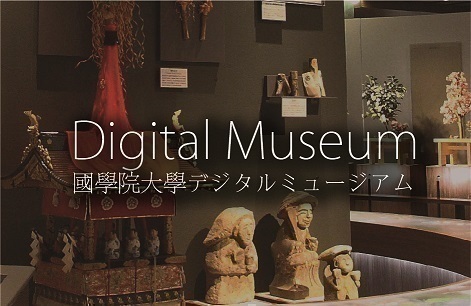- トップ
- Encyclopedia of Shinto
- Ōkuninushi
Encyclopedia of Shinto
| Main Menu: | |
| Links: |
詳細表示 (Complete Article)
| カテゴリー1: | 2. Kami (Deities) |
|---|---|
| カテゴリー2: | Kami in Classic Texts |
| Title | Ōkuninushi |
| Text | [Ōkuninushi no kami] (Kojiki) Other names: Ōnamuji no kami, Ashiharashiko no o no kami, Yachihoko no kami, Utsushi kunitama no kami (Kojiki), Ōmononushi no kami, Kunitsukuri ōnamuchi no mikoto, Ashihara no shikoo, Yachihoko no kami, Ōkunitama no kami, Utsushi kunitama no kami (Nihongi). As indicated above, this kami is known by numerous alternate names, but the name Ōkuninushi (great-land-master) was given to represent the entire range of the kami's attributes as lord of the Central Land of Reed Plains. The name is not found in the main text of Nihongi or fudoki. According to Kojiki, Ōkuninushi accompanied his eighty cruel brothers on their way to woo the maiden Yagamihime in Inaba Province. On the way, Ōkuninushi aided a rabbit whose skin had been stripped off by an animal called a wani (probably referring to a large shark). Yagamihime chose to wed Ōkuninushi instead of his older brothers, causing jealousy among the brothers, who then twice killed Ōkuninushi. Each time he was killed, Ōkuninushi was revived by his mother, and he finally escaped to the underword Ne no kuni. There, Susanoo, lord of the underworld, posed various trials, all of which Ōkuninushi succeeded in passing with the help of Susanoo's daughter Suseribime. Taking Susanoo's divine sword, koto (harp), and bow and arrow, Ōkuninushi returned to the visible world with Suseribime as his new bride. Ōkuninushi used the power of the magic weapons to defeat his brothers, thus becoming lord of the Central Land of Reed Plains, and with the cooperation of Sukunahikona, he engaged in the work of firming the land. After Sukunahikona departed, Ōkuninushi enshrined the kami Ōmononushi in Mt. Miwa of Yamato and continued the development of the land. Later, Ōkuninushi transfered his control over the land to Takemikazuchi (see kuniyuzuri), who had descended from heaven with the command to pacify the Central Land of Reed Plains; with this act, Ōkuninushi retreated to the "world of shade" (yūkai). From the medieval period, Ōkuninushi was identified with the popular deity Daikokuten, since the characters forming their names shared the same Sino-Japanese reading. Ōkuninushi is enshrined at Izumo Taisha and other shrines. In Kojiki, Ōkuninushi's offspring, and the consorts with whom he fathered them, include Kimata no kami (also called Mii no kami) with the goddess Yakamihime; Ajisukitakahikone no kami and Takahime no mikoto (also called Shitateruhime no mikoto) with the goddess Takiribime no mikoto; Kotoshironushi no kami with the goddess Kamuyatatehime no mikoto; and Torinarumi no kami with the goddess Totori no kami. According to the sixth "alternate writing" included within the eighth cycle of stories recorded in Nihongi, Ōkuninushi had a total of 181 children. -Kadoya Atsushi, Yumiyama Tatsuya |




